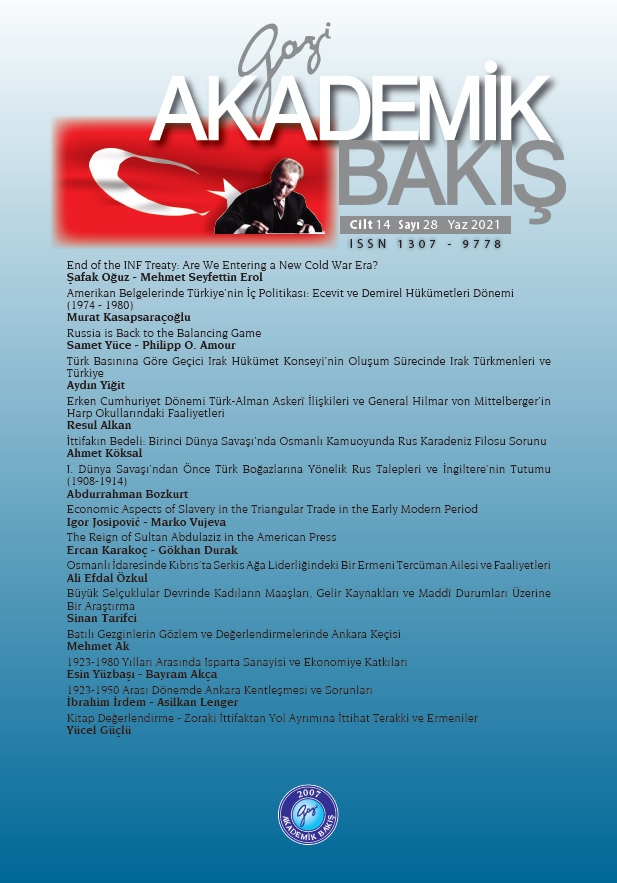Economic Aspects of Slavery in the Triangular Trade in the Early Modern Period
Economic Aspects of Slavery in the Triangular Trade in the Early Modern Period
Author(s): Igor JOSIPOVIĆ, Marko VUJEVASubject(s): Economic history, Political history, Social history
Published by: Gazi Akademik Bakış
Keywords: Slavery; triangular trade; colonialism; New World; North and Central America;
Summary/Abstract: Slavery has existed since the beginning of human civilisation. However, there was a great upsurge in slavery during the early modern period and the Age of Discovery, when it gained enormous popularity and took new forms. The greatest European powers at the time conquered new territories in Central and North America, developing plans howto exploit them in the most profitable way possible. To unlock the economic potential of these territories, colonial countries started organising a plantation economy by using slave labour. Consequently, colonial countries generated large profits, while the international trade began to flourish. Since there was a labour shortage due to an increased volume of economic activities, colonial countries engaged in the triangular trade, which ensured cheap and large workforce –slaves. As a result, slaves from Africa were brought to plantations in the New World, the most sought-after products,such as sugar, cotton and indigo, came to Europe from colonies, while almost all products that were scarce in colonies were imported from Europe. Therefore, the objective of this paper was to analyse the impact and costs of slave labour and plantation economy on the efficiency of the triangular international trade.
Journal: Gazi Akademik Bakış
- Issue Year: 14/2021
- Issue No: 28
- Page Range: 179-197
- Page Count: 18
- Language: English

